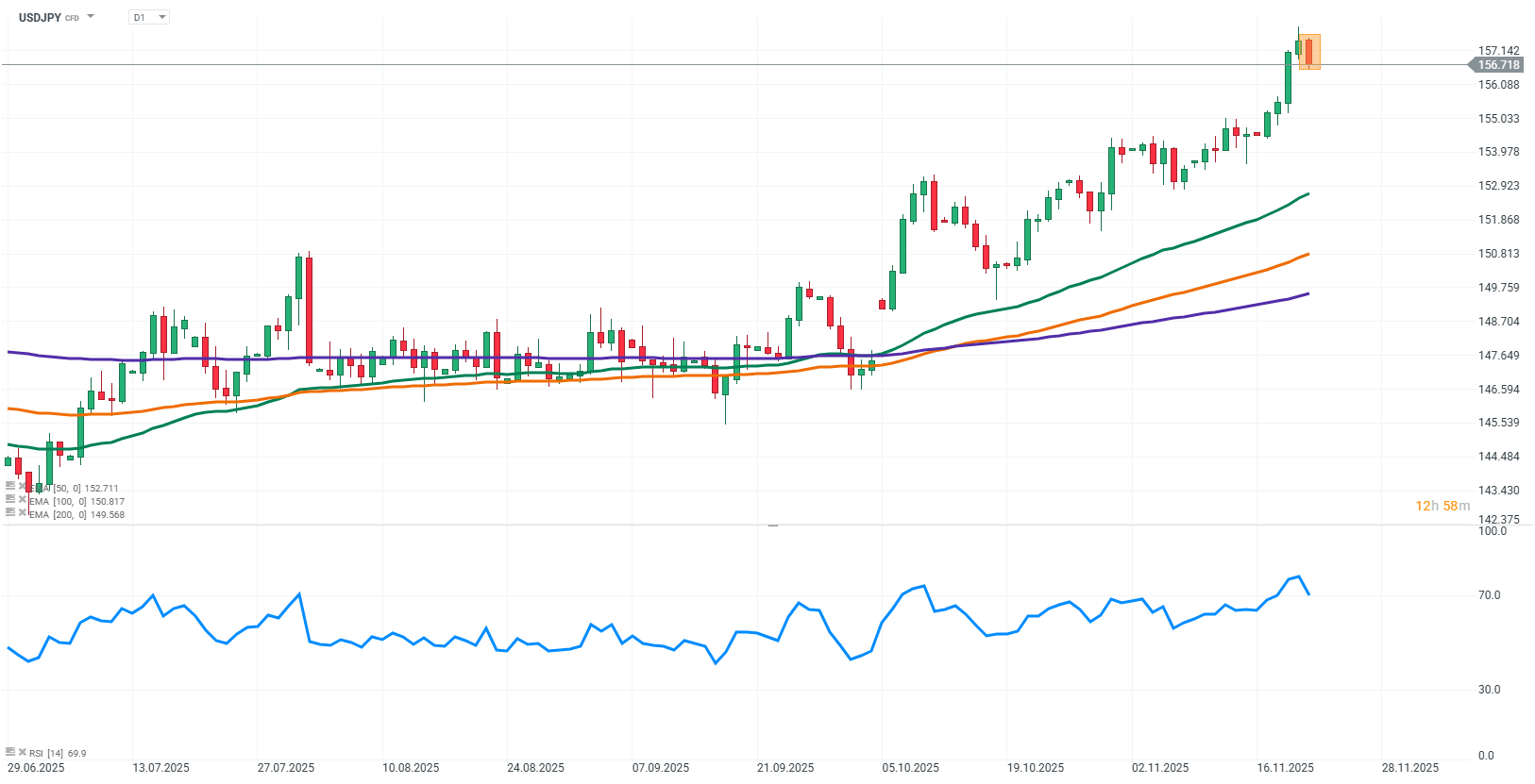Chart of The Day – USD/JPY
The USD/JPY exchange rate is currently around 156.7. Today’s trading is influenced by a complex mix of fundamental factors, where a strong dollar competes with potential interventions from Japan. The difference in monetary policy between the US and Japan still favors the dollar, but the risk of actions by the BOJ and the Japanese government limits the pair’s upside. The focus remains on US data, FOMC minutes, and Japan’s recently approved fiscal package worth JPY 21.3 trillion, which could determine the next moves of the pair.

Source: xStation5
What’s driving USD/JPY today?
Monetary policy of the Fed and BOJ
The Fed maintains a hawkish stance, and the market interprets the FOMC minutes as a signal that US interest rates will remain relatively high. The Bank of Japan continues its ultra-loose policy, refraining from rapid normalization, which limits potential yen strength. These differences in monetary approaches create a structural advantage for the dollar.
Summary:
The Fed remains hawkish, BOJ keeps a loose policy. The interest rate advantage favors the dollar.
Risk of intervention and Japanese government policy
The Japanese government has repeatedly highlighted the need to stabilize the yen, but so far has limited itself to statements. A government representative emphasized that sudden moves in the FX market require attention and possible stabilization. The lack of concrete actions combined with the BOJ’s ultra-loose stance creates tensions and keeps investors cautious about the yen.
Summary:
The government monitors the yen, BOJ remains passive. Markets interpret this as a sign of currency weakness.
Japan’s fiscal package
The recently approved fiscal package worth JPY 21.3 trillion has triggered mixed reactions in the market. Some of the funds are aimed at easing inflationary pressures, but the new bond issuance could increase the burden on the debt market, which, together with rising yields, supports the yen in the short term.
Summary:
The fiscal package raises debt market risk and temporarily supports the yen.
US macroeconomic data
Strong US labor market data, including NFP, wages, and the unemployment rate, strengthens the dollar. The market interprets these figures as confirmation that the Fed will maintain high rates. Japanese macro data currently have limited impact because the BOJ reacts slowly and does not change policy in the short term.
Summary:
US data drive USD/JPY, while Japanese data have little influence.
Interest rate differential
The wide gap between high US rates and low Japanese rates continues to work against the yen. Markets benefit from the dollar’s advantage and still use the yen in funding strategies, maintaining the structure of the dollar’s superiority.
Summary:
The large interest rate differential favors the dollar. The yen remains weak in funding.
The material on this page does not constitute financial advice and does not take into account your level of understanding, investment objectives, financial situation or any other specific needs. All information provided, including opinions, market research, mathematical results and technical analyzes published on the Website or transmitted To you by other means, it is provided for information purposes only and should in no way be construed as an offer or solicitation for a transaction in any financial instrument, nor should the information provided be construed as advice of a legal or financial nature on which any investment decisions you make should be based exclusively To your level of understanding, investment objectives, financial situation, or other specific needs, any decision to act on the information published on the Website or sent to you by other means is entirely at your own risk if you In doubt or unsure about your understanding of a particular product, instrument, service or transaction, you should seek professional or legal advice before trading. Investing in CFDs carries a high level of risk, as they are leveraged products and have small movements Often the market can result in much larger movements in the value of your investment, and this can work against you or in your favor. Please ensure you fully understand the risks involved, taking into account investments objectives and level of experience, before trading and, if necessary, seek independent advice.






